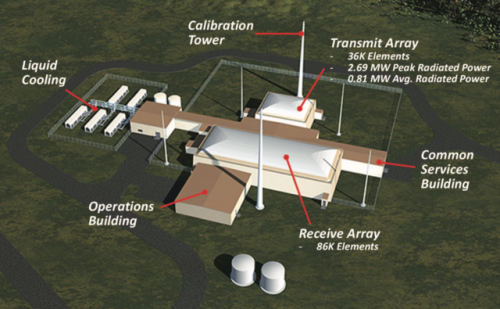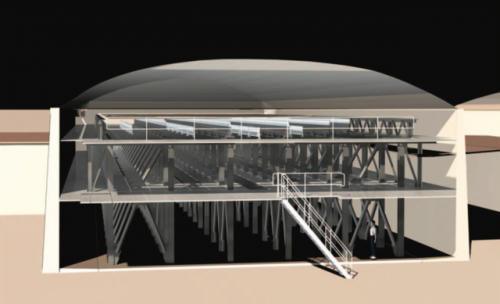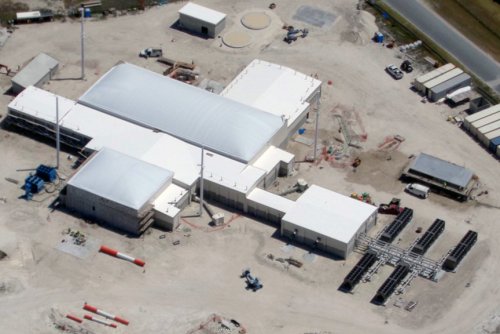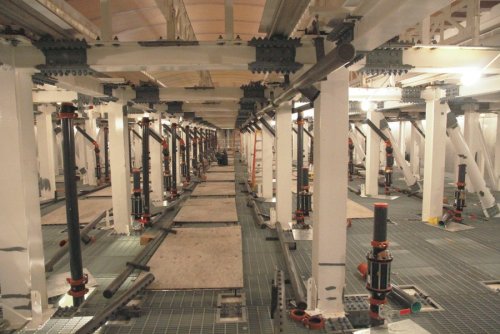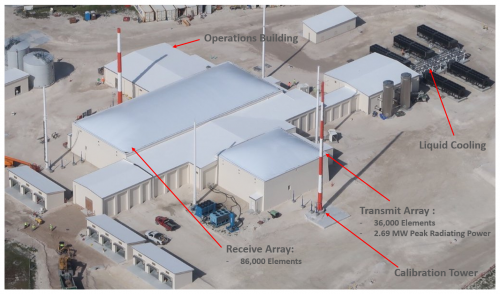Lockheed Martin begins tracking objects with its Space Fence test radar
Lockheed Martin has begun tracking objects in space with a scaled-down test version of its Space Fence radar under construction in Kwajalein Island.
The test site at Lockheed Martin's Moorestown, New Jersey facility will be used for early validation of hardware, firmware, and software that will be used to enable Space Fence to detect, track, and catalogue objects.
The goal is to minimise the issues that could occur once Space Fence is up and running on Kwajalein Island, Bruce Schafhauser, Lockheed Martin's programme manager for Space Fence, told IHS Jane's on 30 March.
"It allows us to demonstrate verification of 80% of the system level requirements here in Moorestown," he said. "It is also a training vehicle for the integration and test team."
The integration test bed (ITB) will also be used to support integration and test activities at Kwajalein by helping to replicate and track issues as they arise, Schafhauser added.
Lockheed Martin executed its first track earlier in March. The first object happened to be a NOAA weather satellite, Schafhauser said.
"We operated the system like it will be at the site [in Kwajalein]. In the ITB system we typically set the parameters to track every object we pick up in the fence until we reach the edge of the field of regard," he said.
The first tracking session ran about 30 minutes. During that time, Lockheed Martin engineers tracked about a dozen objects. Although the initial test ran for just a half an hour, Schafhauser said it was more than enough time to confirm the hardware, software, and firmware were successfully integrated.
The test site tracks objects in Low Earth Orbit (LEO), which is about 1,000 km (621 m) up in the thermosphere. Everything about the ITB is identical to the system that will be installed at Kwajalein, with the exception of the scale of the antenna, Schafhauser said.
"Objects that we are able to track from our surveillance fence to the edge of the field of regard typically last about 25 seconds," he said. "That is the length of the arc, which is a little more than 40 degrees."
If the ITB picks up an object that correlates to an existing object in the catalogue, the object's track will be processed and reported on so that the information can be used to update the existing catalogue. But if an object does not match anything in the catalogue, a new initial orbit determination will be created and used to support adding a new object to the catalogue, Schafhauser said.
"This is the first operation of the end-to-end radar with the end item components. It gives us confidence in the maturity of the design," he added.
The Kwajalein site will have a separate transmit and receive array buildings of which the receive building will be the bigger of the two array buildings. There are also ancillary buildings that will hold the heating, ventilation, and air-conditioning systems. The sensor will be run from an operations building which will also contain the services to run the digital processor and the mission processor equipment.
Construction of the facility is close to 45% complete, Schafhauser said.
Space Fence is a modular scalable design that will have 16,000 line replaceable units (LRU).
Schafhauser noted the design of Space Fence lends itself to easy maintenance.
"Basically you keep the radar operating to replace a LRU which is the inherent element that makes this radar work. You can turn off a column on the array and remove and replace an LRU in little over a minute," he said. "It is a graceful degradation system so you would not replace everyone that failed. You let them accumulate and swap them out in one maintenance action."
The program's engineering, manufacturing and development phase and production for site 1 - in the Kwajalein Atoll in the Marshall Islands - remains on track with initial operational capability set for between the end of 2018 and mid-2019, writes Scott Johnson.
The current radar production phase will end in the August-September 2016 time frame. Construction of the Kwajalein radar will run to end of 2016, followed by fielding of the radar components and personnel to integrate and test the radar by the end of 2016 or the beginning of 2017.
In regard to the second site option in Western Australia, Steve Bruce of Lockheed Martin previously said work would begin about three years after the first site is operational. We assume work to begin no earlier than 2022. The fiscal year 2017 president's budget request states that Increment 2 (contract option) will include completion of the second radar at a location which is to be determined pending negotiations with the proposed host nation.

